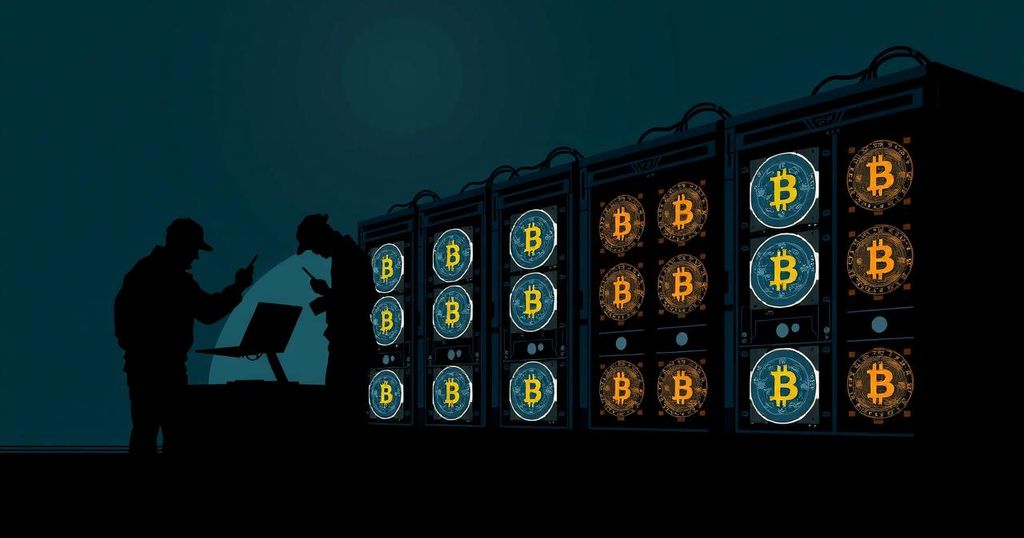Bitcoin Miners Maintain Hardware Investments Amid Market Challenges
Summary
Amid rising operational costs and declining revenues, Bitcoin miners remain committed to investing in new, efficient hardware, reflecting strong confidence in the cryptocurrency’s future. Despite challenges such as increased mining difficulty and reduced transaction fees, advancements in mining technology and strategic shifts towards retaining mined assets suggest a resilient mining community poised for long-term growth. Prominent figures in the industry advocate for diversification into emerging fields like AI computing to ensure profitability and sustainability in a competitive landscape.
Despite facing reduced revenues and soaring operational costs, Bitcoin miners continue to invest in advanced hardware, reflecting a robust confidence in the long-term viability of the leading cryptocurrency network. A recent Glassnode report highlights that Bitcoin’s hash rate has reached near all-time highs, merely 1% below its peak, even as revenues have significantly declined. The mining sector is currently grappling with two major challenges: escalating mining difficulty and diminishing transaction fee income. As the hash rate escalates, so does the complexity of mining, which in turn increases production costs. This situation has been further exacerbated by declining demand for high-fee transactions, such as those linked to Runes tokens and NFT-like Ordinals, affecting miners’ profitability. Nevertheless, the adoption of new, energy-efficient ASIC mining equipment is enabling miners to manage their operating costs effectively. Illia Otychenko, the lead analyst at crypto exchange CEX.IO, noted that the energy efficiency of Bitcoin mining hardware has “more than doubled” from 2018 to 2023, significantly lowering energy consumption per mined coin. This improvement supports miners in offsetting rising electricity costs while maintaining profitability amid challenging market conditions. While the Bitcoin price remains relatively stable, transaction fee pressures have relaxed, further squeezing miner profits. Consequently, miners have begun to retain a portion of their mined Bitcoin. Companies like Marathon Digital have recently adopted a “full HODL” strategy, ceasing the sale of mined BTC and even purchasing additional Bitcoin from the market. Jeffrey Hu, head of investment research at HashKey Capital, interprets this trend as a demonstration of miners’ confidence in Bitcoin’s value: “Miners retaining a portion of their mined supply suggests they are banking on future price appreciation.” At the same time, mining strategists are seeing the re-emergence of older mining rigs becoming profitable again due to recent Bitcoin price increases. Ryan Lee, chief analyst at Bitget Research, explained that “older machines are being brought back into operation as Bitcoin’s price makes previously unprofitable hardware viable.” Supporting the hash rate increase are regulatory advancements in several regions, such as Russia, and endorsements from notable figures, including former President Donald Trump, which mitigate market uncertainties. However, experts unanimously agree that miners must seek alternative revenue channels to ensure enduring profitability. A sense of an “identity crisis” was noted among firms surveyed at the Bitcoin 2024 event in July, with prospects of encouraging diversification emerging as a potential solution. Doug Petkanics, co-founder and CEO of Livepeer, suggested that Bitcoin miners are well-positioned to enter the AI computing market, which requires substantial computational power: “The demand for AI compute power is growing exponentially.” Predictions indicate that the future landscape may see a consolidation of operations, as larger mining firms acquire smaller competitors to expand market share. Recent acquisitions, such as CleanSpark’s purchasing of GRIID for $155 million, highlight this trend toward larger and more economically resilient operations. While there is a push towards diversification, it remains essential for miners to recognize their reliance on block rewards, which constitute over 90% of their income. Otychenko emphasized that transaction fees are only substantial during rare spikes. As the Bitcoin market evolves, it is likely that smaller retail miners will return, drawn by the possibility of profit alongside appreciating cryptocurrency values. In conclusion, the persistence of Bitcoin miners in acquiring new hardware against a backdrop of increasing costs and pressure on profitability reflects their belief in the cryptocurrency’s future. Improvements in mining technology, changing strategic approaches, and diversification into other computing domains are fundamental measures that may enable miners to navigate the industry’s challenges effectively while maintaining financial sustainability.
The article examines the current state of Bitcoin mining, focusing on the ongoing investment in new hardware despite various challenges such as reduced revenues and increased operational expenses. It discusses how miners are adapting to changing market conditions and technology advancements, along with their strategies to sustain and enhance profitability. The importance of energy efficiency in mining equipment and potential diversification into AI computing are highlighted as crucial elements in maintaining a competitive edge in the evolving landscape of cryptocurrency mining.
In summary, Bitcoin miners are demonstrating resilience and confidence in the cryptocurrency’s future by continuing to invest in updated mining equipment, despite facing reduced revenues and increased costs. Enhanced energy efficiency and strategic shifts, such as retaining mined Bitcoin and diversifying into AI compute services, are key strategies that could lead miners to sustained profitability. The industry’s landscape appears poised for further consolidation, urging firms to adapt and innovate in response to the dynamic market environment.
Original Source: decrypt.co








Post Comment